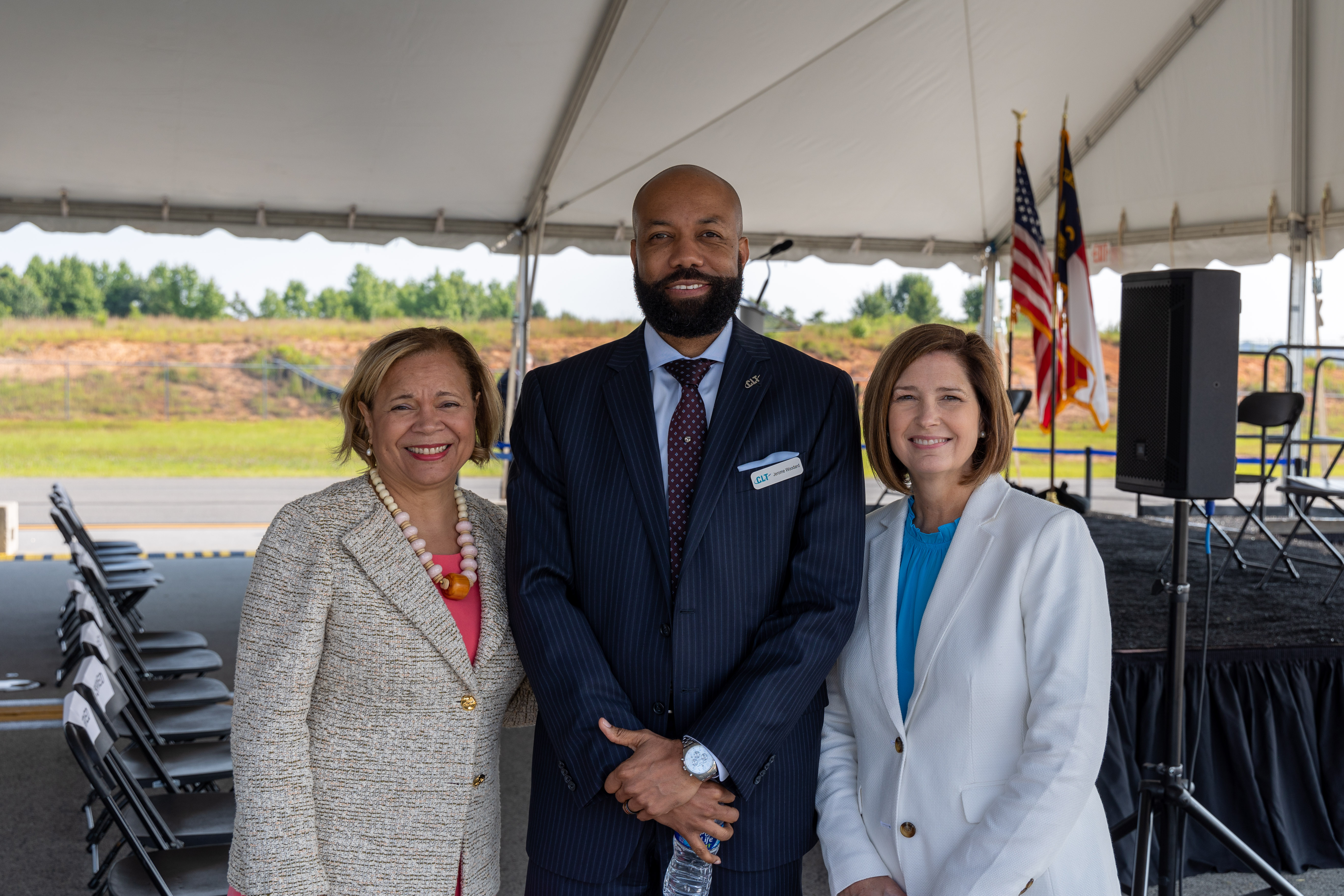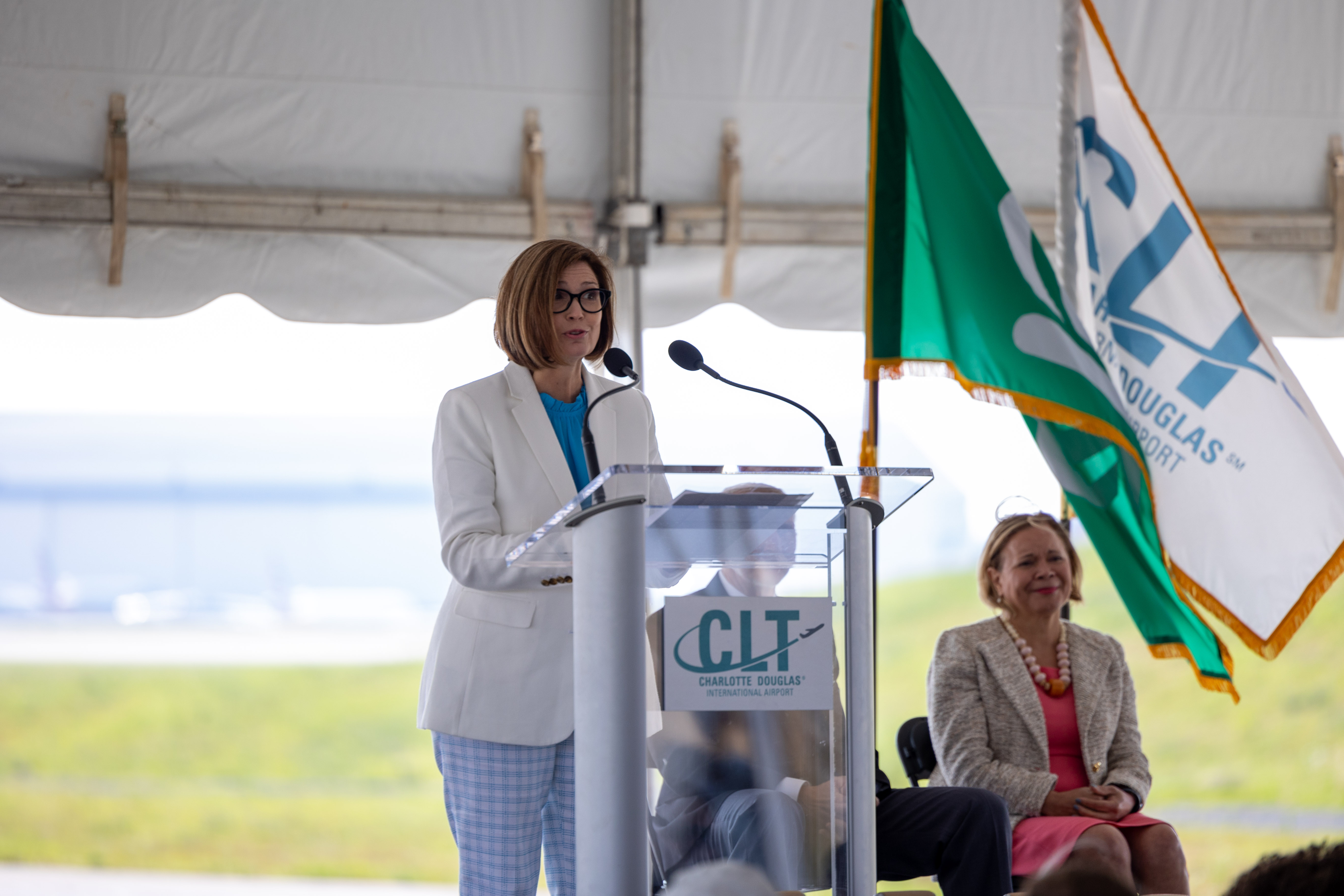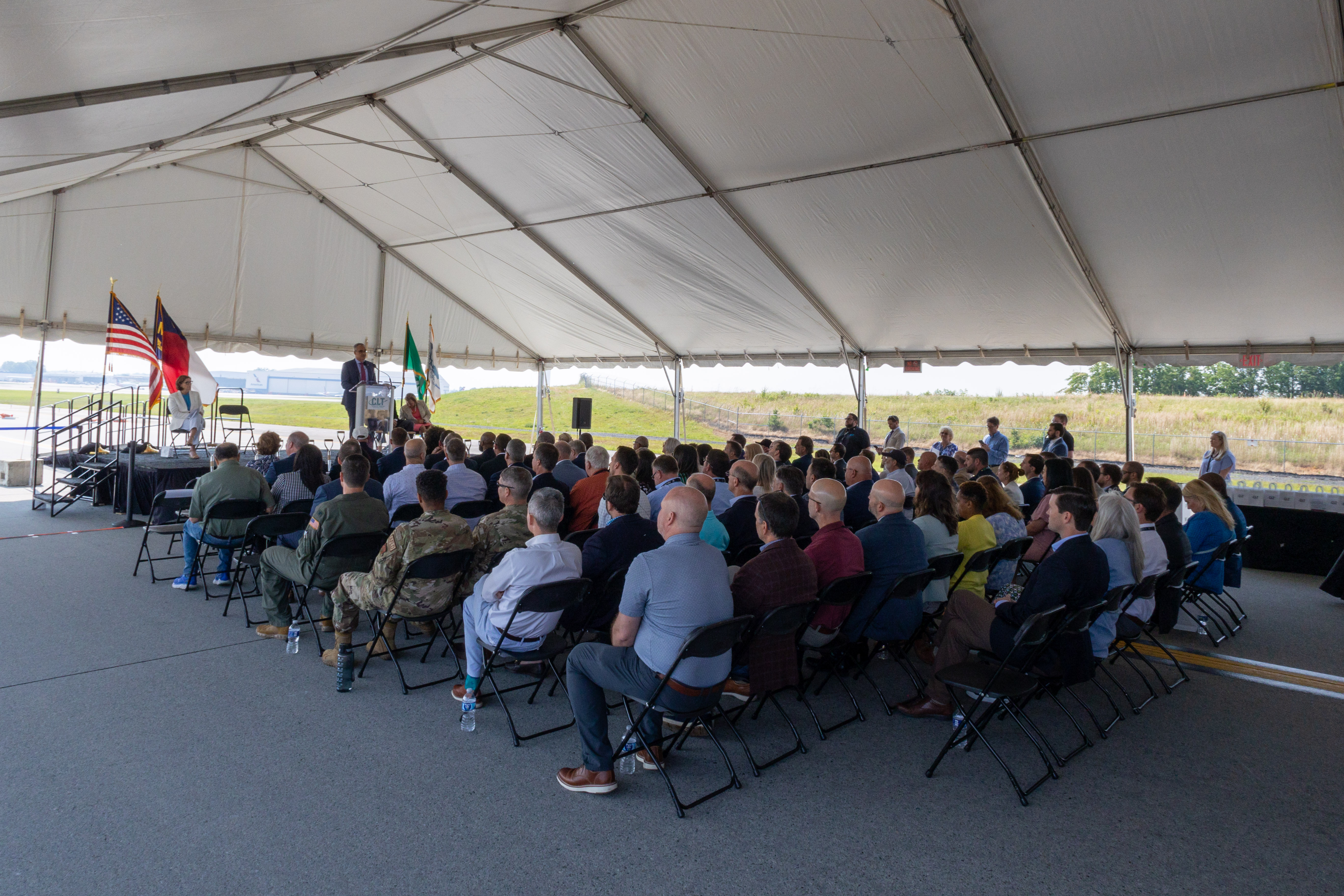
Charlotte Douglas International Airport began the next project under the Destination CLT portfolio today with the groundbreaking of CLT’s fourth parallel runway.
It was identified in the Airport’s 2016 Master Plan Update to address capacity, meeting future demand while enhancing operational efficiency.
Scheduled for commissioning in fall 2027, the runway will allow for 20 additional arrivals and departures during peak hours in 2028 and 32 in 2033.
“This is a special day for the City of Charlotte as we break ground on a new runway at our growing Airport,” Charlotte Mayor Vi Lyles said. “As one of the busiest airports in the world, CLT is a top economic driver for the State of North Carolina and this new runway will increase our operational productivity enabling additional flights while reducing our carbon footprint.”
CLT’s $1.006 billion airfield project will boost operations with the addition of the 10,000-foot-long by 150-foot-wide runway, which will be located west of Runway 18C/36C and serve departing traffic. It will include north and south end-around taxiways, which will give aircraft arriving on the existing western parallel runway the capability for continued movement around the new runway and the existing center runway, reducing aircraft operating time, fuel burn and emissions while eliminating long wait times for passengers’ aircraft to get to their gates.
“The construction of a fourth parallel runaway at Charlotte Douglas will be vital to promote continued growth in the Charlotte region and is a huge win for the state,” said North Carolina Senator Thom Tillis. “I was proud to advocate for funding this project, and this is exactly why I helped negotiate and pass the Bipartisan Infrastructure Law that has already brought more than $75 million to Charlotte Douglas. I want to thank Mayor Lyles and our partners in the region for working together on behalf of the people of Charlotte.”
“American Airlines is proud to continue investing in Charlotte through the airport’s Destination CLT program,” said American’s Chief Operating Officer David Seymour. “This new runway will lead to an increase in capacity to meet future demand. Growth in Charlotte is good for everyone who relies on this airport including American, the customers we serve and our team members.”
The South End-Around Taxiway project will require a one-mile relocation of West Boulevard between Piney Top Road and Byrum Drive. The North End-Around Taxiway necessitates the relocation of the Airport Overlook, a one-mile segment of Old Dowd Road and the construction of a new private access drive adjacent to the Airport’s Long Term 1 parking lot.
Since 2015, Charlotte Douglas has been hard at work developing several Destination CLT projects, the Airport’s $3.1 billion capital investment in capacity enhancements.
Finished projects include Concourse A Expansion Phase I, several concourse renovations, The Plaza and the Airport’s upper and lower-level roadways.
The signature Terminal Lobby Expansion (TLE) continues construction and is more than halfway complete. The east side of the new building is on target to debut this fall. It will include the unveiling of the Queen Charlotte statue.
Outside the 146,000-square-foot TLE roadway canopy under construction will cover the eight lanes in front of the terminal. A late 2024 finish date is scheduled for the canopy.
The 191,848-square-foot, 10-gate Concourse A Expansion Phase II will debut in fall 2024.
CLT ranks the seventh busiest airport worldwide for arrivals and departures and 10th in North America for passengers according to the Airports Council International (ACI) 2022 preliminary rankings. Globally, CLT’s passenger traffic ranks 19th. The final rankings will be made public later this summer or early fall.
Charlotte Douglas handled 505,589 arrivals and departures in 2022 and served nearly 48 million passengers, which is a 10% jump from 43 million passengers in 2021 and only 5% below the record-breaking 50 million passengers in 2019.









